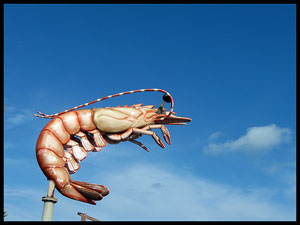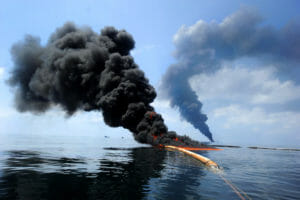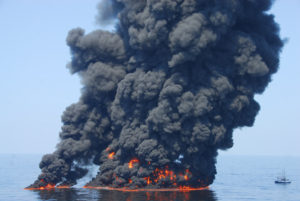Fishermen Test Troubled Gulf Waters
Americans get half of their shrimp from the Gulf of Mexico, but that was before it was contaminated by 190 million gallons of oil and 2 million gallons of chemical dispersant. Shrimp season officially started Monday, but it will be some time before we know whether the ravaged Gulf waters -- and American appetites -- are up to it.
Americans get half of their shrimp from the Gulf of Mexico, but that was before it was contaminated by 190 million gallons of oil and 2 million gallons of chemical dispersant. Shrimp season officially started Monday, but it will be some time before we know whether the ravaged Gulf waters — and American appetites — are up to it.
The National Oceanic and Atmospheric Administration says it is committed to long-term testing of Gulf seafood for contamination.
Beyond whether Gulf fish and shrimp are safe to eat — and the government says tests show that they are — there’s the question of whether all of the turmoil has left much of anything to catch.
The New York Times set off with a shrimp boat and things didn’t seem to go so well:
As he worked, Mr. Alfonso explained that in his view, the main factor affecting the shrimp’s behavior this year was not the oil but the large amounts of fresh water that had been diverted from the Mississippi River to push oil away from the marshes. It had pushed the shrimp, which depend on the right temperature and salinity, away as well, making it harder to catch and decreasing the chances, he predicted, that the white shrimp would return to the interior waters to lay eggs as they normally would.
Instead of schooling together, he said, the shrimp were dispersed. “See how we ain’t seeing no shrimp jump?” he asked. “That’s not good.”
— PZS
Your support matters…Independent journalism is under threat and overshadowed by heavily funded mainstream media.
You can help level the playing field. Become a member.
Your tax-deductible contribution keeps us digging beneath the headlines to give you thought-provoking, investigative reporting and analysis that unearths what's really happening- without compromise.
Give today to support our courageous, independent journalists.





You need to be a supporter to comment.
There are currently no responses to this article.
Be the first to respond.